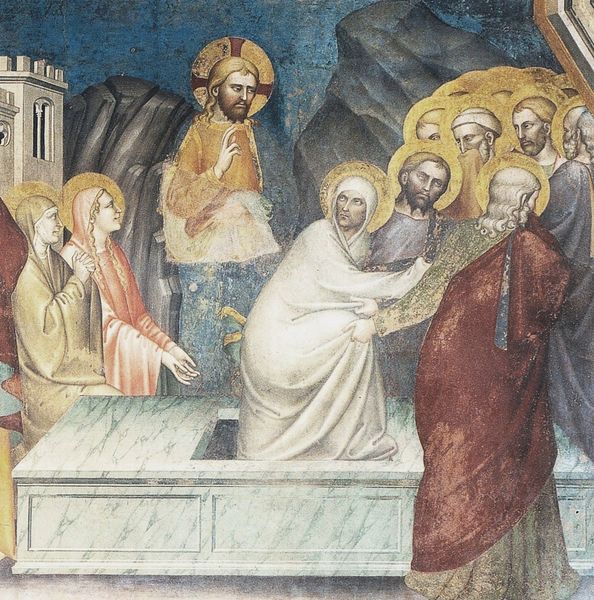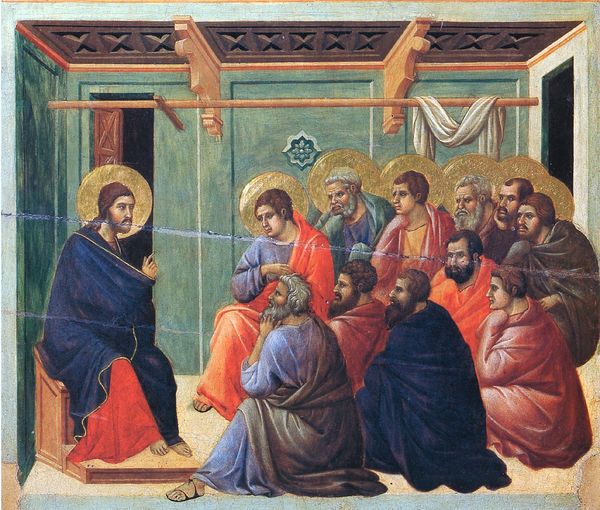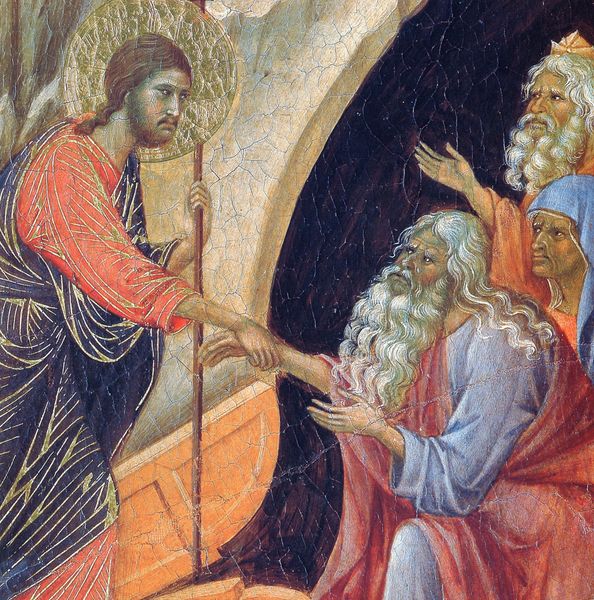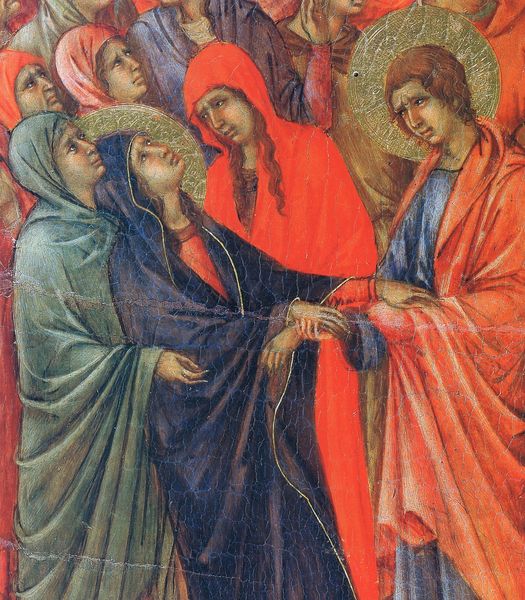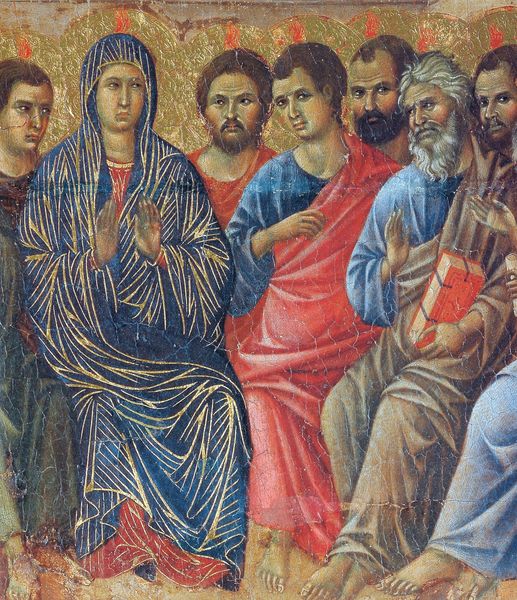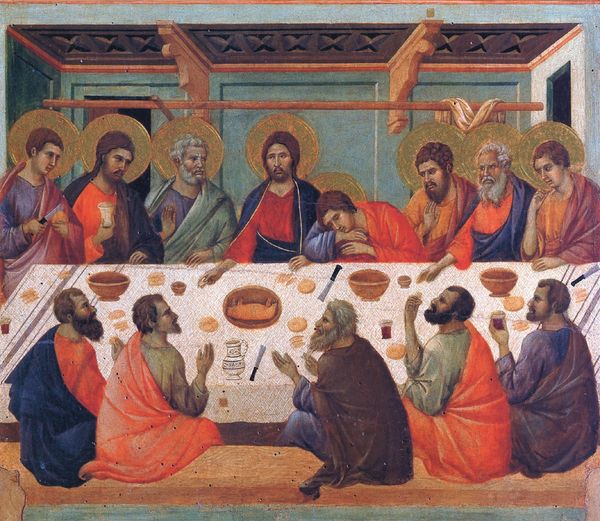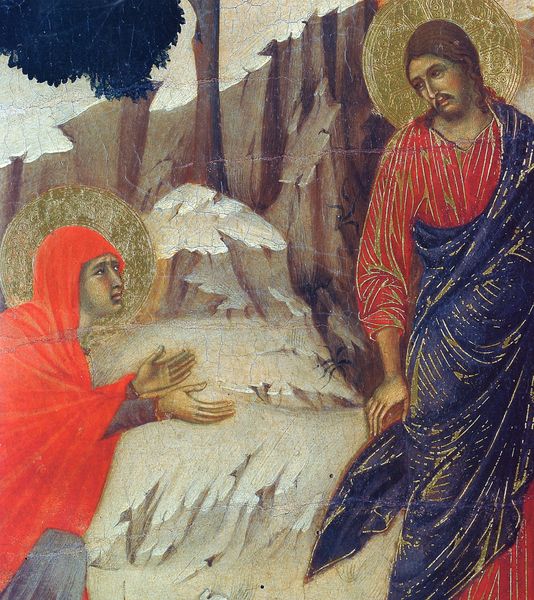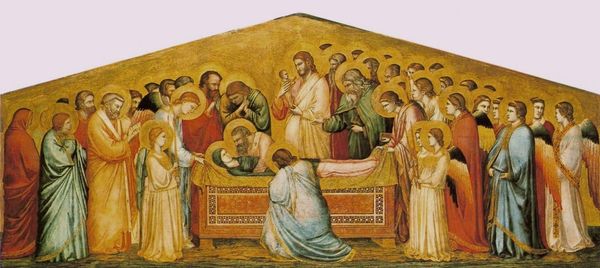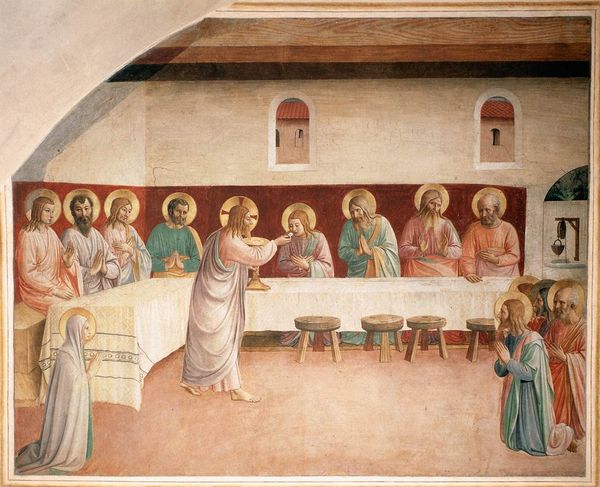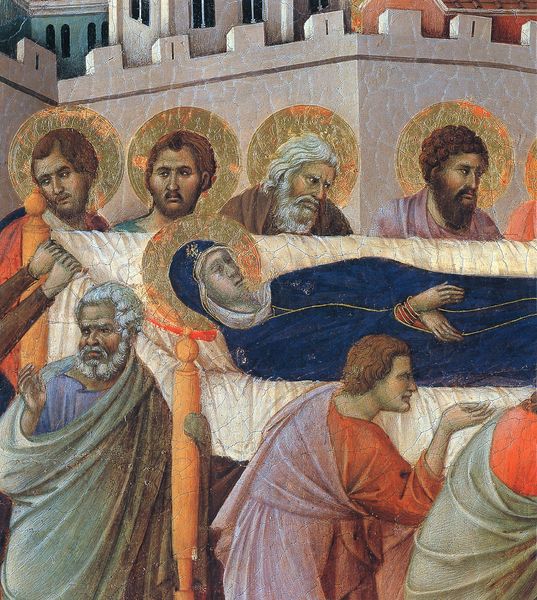
tempera, painting
#
portrait
#
tempera
#
painting
#
sienese-school
#
oil painting
#
christianity
#
history-painting
#
italian-renaissance
#
portrait art
#
christ
Copyright: Public domain
Editor: This is a fragment of Duccio’s “The Apostles of Maria” from 1311, painted in tempera. The scene is very serene, despite the setting; I'm struck by the gentle sadness in the faces. What’s your take on this piece? Curator: Looking at this fragment, it is interesting to think about the context in which it was created. The cult of the Virgin Mary was gaining prominence. How does this image, in your opinion, represent a certain kind of idealized femininity or even a model of female suffering within that socio-religious framework? Consider also how the male figures surrounding Mary might reinforce or challenge those prevailing ideas. Editor: Well, there is a sense of solemn respect being paid to Mary by the male apostles that implies deep appreciation and value towards her, which somewhat diverges from what I’ve learned about the typical expectations of women’s roles at the time. Curator: Precisely. And consider the material value, too. The gold leaf suggests not only divinity but a financial investment that further elevates Mary. How do you think the intended audience, steeped in both religious doctrine and societal expectations, might have responded to such a potent symbol of female piety and significance? Did it subvert expectations, or reinforce existing power structures? Editor: It probably did a bit of both; showing her death, but honoring her life in a powerful, visual way, reinforcing devotion but perhaps subtly elevating female figures in the viewers’ consciousness. Curator: Exactly. The power of art lies in this inherent ambiguity, and these sorts of devotional images walk a fascinating line within their historical contexts, navigating existing power dynamics while subtly pushing at their boundaries. I think by seeing both we get closer to how society and faith existed. Editor: That’s a great point, I’ve never really thought about the financial value of religious depictions, and how this aspect further elevated the image of Mary in the scene. Thank you!
Comments
No comments
Be the first to comment and join the conversation on the ultimate creative platform.

